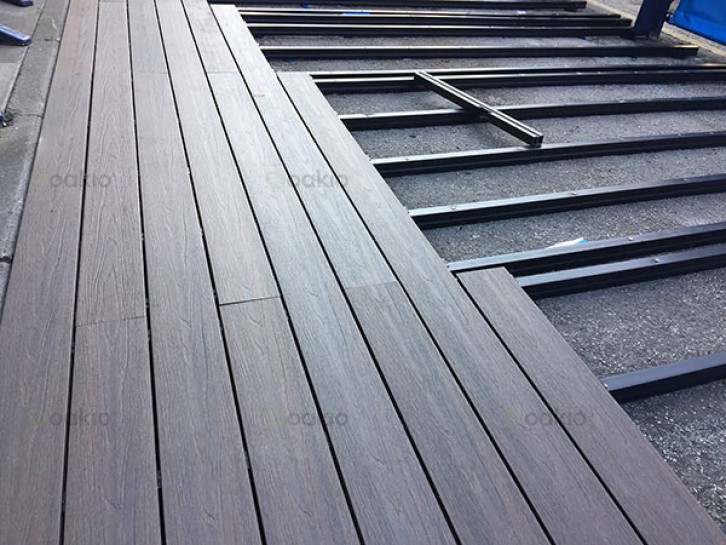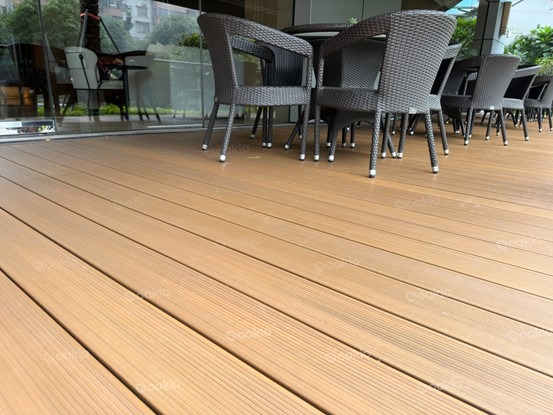How to Cut Composite Decking- Expert Guide
When it comes to composite decking, achieving precise cuts is crucial for a flawless installation. In this comprehensive guide, we will explore the best techniques and tools for cutting composite decking. Whether you’re a seasoned DIY enthusiast or a professional contractor, mastering the art of cutting composite decking will ensure stunning results and long-lasting beauty for your outdoor space.

Understanding Composite Decking
Composite decking is a popular choice for outdoor spaces due to its durability, low maintenance requirements, and aesthetic appeal. It is made from a combination of wood fibers, recycled plastics, and binding agents. This composition gives composite decking its strength and resistance to rot, insects, and fading. However, these materials require specific cutting methods to ensure clean and accurate cuts.

Tools and Equipment Needed for Cutting Composite Decking:
To cut composite decking effectively, you’ll need the right tools and equipment. Here are some essential items:
- Decking Cutter: A specialized decking cutter is the best tool for cutting composite decking. It features a sharp blade designed to slice through the tough composite material cleanly and accurately.
- Circular Saw: If you don’t have access to a decking cutter, a circular saw with a fine-toothed carbide blade can also be used. Ensure that the blade is suitable for cutting composite materials.
- Measuring Tools: A tape measure, speed square, and pencil are essential for precise measurements and marking.
- Safety Gear: Always prioritize safety when working with power tools. Wear safety goggles, ear protection, and gloves to protect yourself from debris and potential hazards.
Expert Tips on How to Cut Composite Decking
To achieve clean and accurate cuts on composite decking, follow these best practices:
- Straight Cuts: Measure and mark the desired cut line using a tape measure and speed square. Use a decking cutter or circular saw to make a straight cut along the marked line. Apply steady pressure and maintain control throughout the cut.
- Angle Cuts: For angled cuts, use a protractor or angle finder to determine the desired angle. Mark the angle on the decking board and carefully make the cut using a decking cutter or circular saw. Take your time to ensure accuracy.
- Notching and Rounding Edges: To notch or round edges, use a jigsaw or a router with a carbide-tipped bit. Take care to follow the marked lines and make smooth, controlled cuts.
Step-by-Step Guide to Cutting Composite Decking
Follow these step-by-step instructions to cut composite decking accurately:
- Measure and Mark: Measure the length or angle required for the cut and mark it on the decking board using a tape measure and pencil.
- Choose the Right Blade: Select a sharp blade suitable for cutting composite materials. A fine-toothed carbide blade is recommended for clean cuts.
- Cutting Techniques: If using a decking cutter, align the blade with the marked line and apply steady pressure to make the cut. If using a circular saw, adjust the blade depth to slightly deeper than the thickness of the decking board. Guide the saw along the marked line, maintaining control throughout the cut.
- Finishing Touches: After making the cuts, inspect the edges for any roughness or splintering. Use sandpaper or a router to smooth out any imperfections.
Also check the brilliant decking gallery here
Troubleshooting Common Issues
While cutting composite decking, you may encounter some common issues. Here are solutions to address them:
- Splintering: To minimize splintering, ensure that you’re using a sharp blade and cut at a slow, steady pace. Applying masking tape over the cut line can also help reduce splintering.
- Chipping: Chipping can occur if the blade is dull or if the decking material is unsupported during the cut. Ensure that the material is adequately supported and consider using a new blade.
- Uneven Cuts: Uneven cuts can result from an unstable cutting surface or improper blade alignment. Use a stable work surface and take care to align the blade with the marked line.
Maintenance Tips for Composite Decking
Does Composite decking require regular maintenance? Well, after cutting composite decking, proper maintenance is essential to preserve its appearance and durability. Here are some maintenance tips:
- Clean Regularly: Remove dirt, debris, and stains using a mild soap or composite decking cleaner. Scrub gently with a soft-bristle brush and rinse thoroughly.
- Protect from UV Exposure: Apply a UV protectant specifically designed for composite decking to prevent fading and discoloration caused by sun exposure.
- Seal the Cuts: If you’ve made any exposed cuts, consider using a touch-up kit or a sealant to protect the cut edges from moisture and potential damage.
FAQs
Do you need a special blade to cut composite decking?
Yes, when cutting composite decking, it is recommended to use a special blade designed specifically for cutting composite materials. These blades typically have a fine-toothed design and are made from carbide or other durable materials. The specialized blade helps to ensure clean and precise cuts while minimizing the risk of splintering or chipping.
What blade to cut composite decking?
When selecting a blade to cut composite decking, it’s important to choose one that is specifically designed for cutting composite materials. Look for a fine-toothed blade with carbide tips, as this type of blade is well-suited for cutting through the tough composite material cleanly and accurately.
It’s also essential to consider the size and quality of the blade. Opt for a blade with the appropriate diameter to fit your circular saw or decking cutter. Additionally, ensure that the blade is sharp and in good condition before starting your cutting project. A dull blade can result in rough cuts and may increase the risk of splintering or chipping.
Remember to follow the manufacturer’s recommendations and guidelines for blade selection and usage. By using the right blade, you can achieve clean and precise cuts while maintaining the integrity of your composite decking boards.
Conclusion
Mastering the art of cutting composite decking is essential for achieving precise and professional-looking installations. By following the techniques and using the right tools, you can ensure clean and accurate cuts, enhancing the overall beauty and longevity of your composite decking. If you are looking for a perfect composite decking, find it with oakio.
Trending Reading
What Are the Differences Between the WPC Board and PVC Board?
[2024 Update] How Long Does WPC Decking Last?











